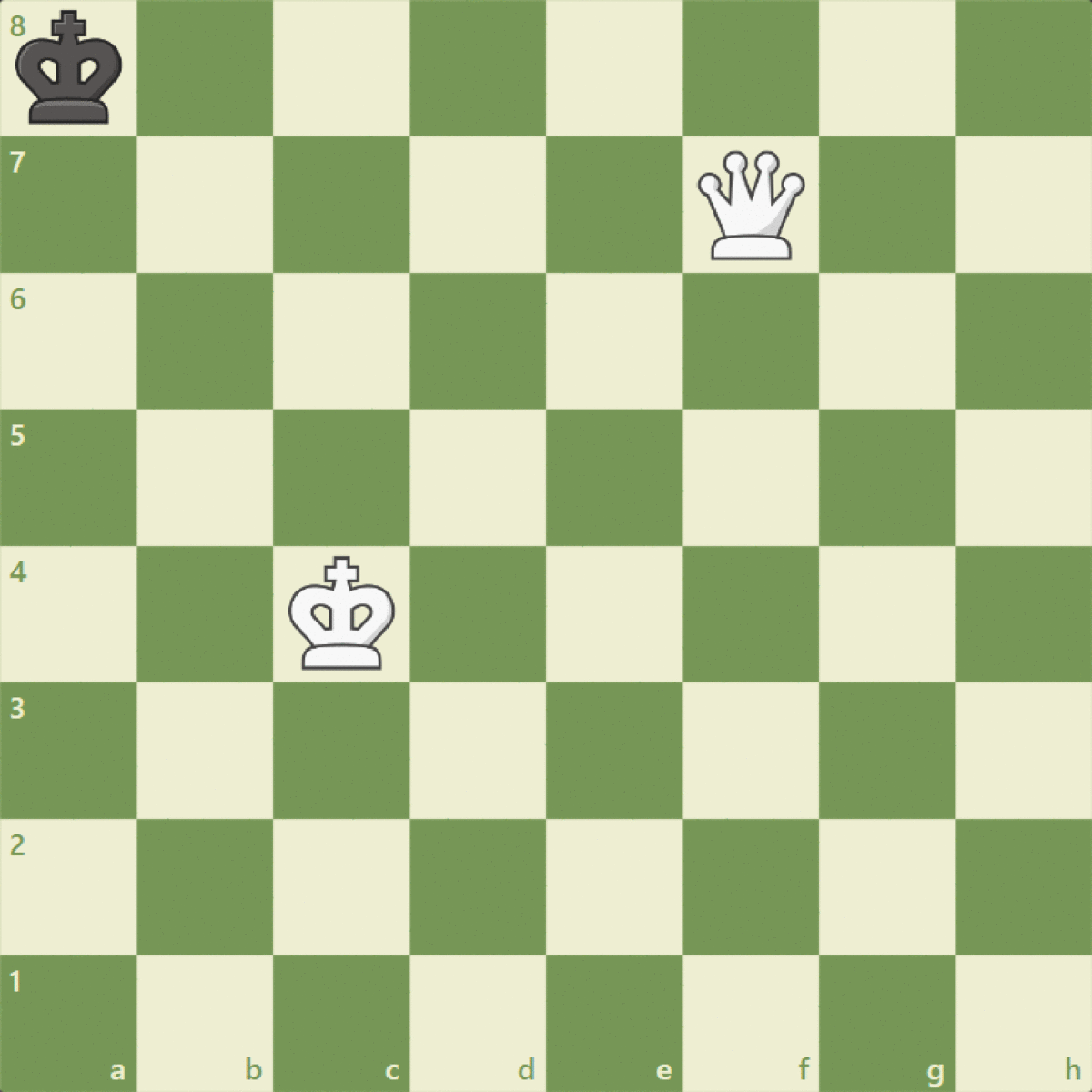
Stalemate
The game is almost over, and you are ahead in material. Suddenly, though, you make a move, and the game ends in a draw. Stalemate can be a source of a lot of frustration, but it can also be your saving grace.
What Is Stalemate?
Stalemate is one of the drawing rules of chess. It happens when the player who has to move has no legal moves available The game then ends immediately in a tie, and each player is awarded half a point.
The diagram below shows a stalemate that frequently occurs for beginner players. The queen, being such a potent attacker, can quickly force a win against a lonely enemy king. If the player is not careful, though, it can also leave no legal moves for the opponent and cause a draw.

Examples Of Stalemate
Throughout chess history, many great players have used stalemate in their favor to save lost positions. It is a great idea to keep in mind because sometimes you can use it to prevent losing a game or even to stop your opponent from doing so.
In this game between chess master Alfred Ehrhardt Post and famous GM Aron Nimzowitsch, Black was facing a lost position. Confronting two connected and passed pawns, Nimzowitsch decided to go for a draw. Below we see a remarkable rook sacrifice that forces a tie.
In another game played in 1991, the Indian legend GM Viswanathan Anand was in a bad situation facing Russian GM Alexey Dreev. He found a smart way of drawing the game by threatening to promote his last two moving pawns and forcing Dreev to capture the a-pawn. Unfortunately for the Russian grandmaster, however, this capture led to a stalemate.
Test Your Skills
Now that you are familiar with the stalemate rule, let's put your skills to the test! In each puzzle below, you have to either avoid or provoke a stalemate. Choose one of the two move options to reach your goal.
Puzzle 1: You have a winning position with a queen against a lonely king. Should you move your queen to the g3-square to restrict Black's king even further, or should you start bringing your king closer to the action by moving it to e1?
Puzzle 2: Your opponent has an extra pawn that is close to promoting. Should you start running away from the corner with your king by playing c1, or should you go to the a1-square?
Puzzle 3: The game is looking bleak as your opponent is ahead in material and has a pawn threatening to promote on the a-file. You have the possibility of drawing this game, though. Should you try to protect your king by moving your rook to the h1-square, or should you check your opponent's king by moving your rook to h2?
Conclusion
Knowing the rules for the stalemate is crucial for chess players of all levels. Recognizing possible drawing positions can both save you from a loss or prevent you from winning, so it is a good idea to keep your eyes open for those situations.
Watch the Video Lesson
You can learn a lot by watching a video lesson after reading an article! Check out the short video below to deepen your knowledge about stalemates!







